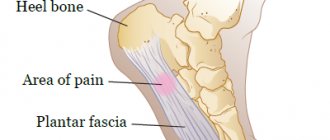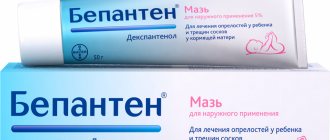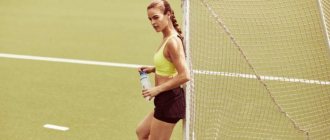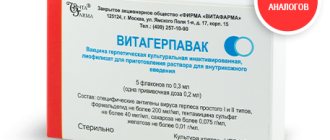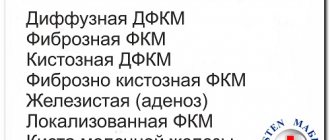Torticollis: what is it, what types are there, why is it dangerous?
Torticollis is a disease in which deformity of the spine develops in the cervical region. It is accompanied by tilting the head and raising the scapula on the sore side and turning the face to the healthy side. Torticollis can be caused by problems with the development of muscles, fascia, nerves or vertebrae.
Due to deformation, doctors distinguish:
Congenital torticollis: – muscular – caused by dysfunction of the muscles that turn and tilt the head; – bone – caused by structural anomalies of the cervical or thoracic vertebrae.
Acquired torticollis (eg, Grisel's disease).
Depending on the side of the lesion:
– right-sided torticollis; - left-sided torticollis.
According to statistics, congenital, right-sided torticollis is more common and girls are affected less often than boys.
Deformity with torticollis can be:
– fixed – when the muscles have lost their extensibility and the child’s head does not change position, even if he turns over, if the parents put a special pillow under his head or try to straighten it with his hands; – not fixed – when the muscles still retain the ability to stretch, the listed manipulations help tilt the head to the healthy side.
If you suspect torticollis, do not try to correct the position of your head yourself. Only a specialist can make an accurate diagnosis, determine its type and prescribe therapy. Self-medication can only make the problem worse.
Why torticollis should not be ignored
The neck contains vital organs:
- spinal cord - controls movements, transmits information from all organs to the brain and back; - carotid arteries, jugular veins - provide blood supply to the head; - esophagus - ensures delivery of the bolus of food to the stomach; - trachea - participates in the act of breathing; - larynx - contains the voice-producing apparatus; - thyroid gland - participates in maintaining hormonal balance.
Pathological changes in torticollis can lead to disruption of the functions of these organs and the child may become disabled.
What complications are torticollis dangerous for:
– Change in the shape of the skull (plagiocephaly); – Asymmetry of facial bones; – Spinal deformities, for example, scoliosis; – Hydrocephalus - increased intracranial pressure as a result of disruption of the normal outflow and accumulation of cerebrospinal fluid; – Brain damage; – Neurological disorders (increased excitability, excessive regurgitation, muscle hypertonicity, etc.); – Difficulty breathing; – Strabismus; – Hearing impairment, underdevelopment of the auricle; – Delayed speech development; – Behavioral disorders (aggression, inappropriate actions, disobedience); – Poor sleep; – Incorrect development of the upper and lower jaws; – Late teething, improper growth; - Nosebleeds.
In newborn babies, the neck is involved in the act of sucking, so the deformation can interfere with normal feeding. Children with torticollis begin to crawl, sit and walk later than their healthy peers.
Torticollis is one of the three most common congenital diseases of the musculoskeletal system in children, second only to congenital dislocation of the hip joint and clubfoot. It can cause neurological disorders in the child, changes in the shape of the skull, spine and other complications.
Changes in the shape of the skull occur in every third baby with a diagnosed neck deformity. In addition to an aesthetic defect and, as a consequence, psycho-emotional disorders, it can lead to developmental delays.
Knowing the causes and signs of this disease will help young parents seek help from a doctor in time to prevent its development or for treatment.
Symptoms
Muscle contractions associated with cervical dystonia can cause the head to rotate in various directions, including:
- Chin tilts towards shoulder
- Ear to shoulder
- Chin goes up
- Chin drops straight down
The most common type of twisting with cervical dystonia is when the chin is pulled towards the shoulder. Some people have a combination of poor head postures. Jerky movements of the head may also occur.
Most patients with cervical dystonia may also experience neck pain that may radiate to the shoulder. The disease can also cause headaches. In some patients with spasmodic torticollis, the pain can be intense and debilitating.
Causes of development of torticollis in newborns
Torticollis is caused by changes in muscles, fascia, vertebrae, or nerves. It can also be the result of muscle tension in response to pain, neurogenic diseases or abnormalities in the development of blood vessels, but these causes are rare.
The pathogenesis of deformity almost always involves the sternocleidomastoid (sternocleidomastoid) muscles. They stretch along the sides of the neck, from the jugular fossa to the behind-the-ear region and are responsible for the ability to turn and tilt the head and keep it vertical.
If torticollis is from birth , then its cause is in the pathology of the sternocleidomastoid muscle or vertebrae.
Risk factors:
– Poor posture and scoliosis in the mother. They cause displacement of the internal organs of a pregnant woman, incl. the uterus, so the fetus is located in it asymmetrically even at the implantation stage. If torticollis is not treated, it can lead to scoliosis in a child. – Difficult pregnancy. Severe toxicosis, the threat of its interruption, impaired mobility of the pelvic bones, tension in the woman’s muscles and ligaments can disrupt the blood circulation of the fetus and cause a disruption in the formation of its organs and tissues, followed by torticollis. - Breech presentation. The uncomfortable position of the child in the uterine cavity leads to a pathological change in the muscle when, along with muscle fibers, fibrous tissue appears in it. The muscle does not stretch well and this prevents it from growing normally. - Umbilical cord entanglement. A condition that may be accompanied by oxygen starvation of the fetus, which means a deterioration in the nutrition of its organs and tissues with subsequent abnormalities in their development. - Birth injury. During a difficult birth, hemorrhage occurs into it, followed by the formation of a compaction and even a scar in the muscle. The use of obstetric forceps, vacuum extraction or cesarean section by doctors can also have a negative impact. You can learn more about birth trauma here.
If a child was born healthy and torticollis appeared some time after birth, then the reason may be related to:
– Inflammation of the sternocleidomastoid muscle, both independently and against the background of other diseases; – Spondyloarthritis of the cervical vertebrae as a result of infection of the ENT organs (Grisel’s torticollis); – Neuralgia, for example, as a result of hypothermia, infectious diseases or compression of the spinal cord roots; – Diseases of the organs of hearing (otitis) and vision (strabismus), when the head is tilted specifically to reduce pain in the first case or to see better in the second; – Trauma, such as a fall, a blow to the head, or a burn.
Acquired torticollis can occur at any age, incl. in adults, for example, as a result of a forced position during professional activity or exposure to harmful environmental factors (drafts).
Diagnostics
The diagnosis of cervical dystonia (spasmodic torticollis) is made on the basis of characteristic symptoms, examination data and the results of instrumental studies.
The doctor may be interested in answers to the following questions:
- When did the symptoms start?
- Have your symptoms worsened over time?
- What relieves symptoms?
- What medications is the patient taking?
- Have you had a stroke or head injury in the past?
Examination and medical history data help make a preliminary diagnosis of cervical dystonia. But for an accurate diagnosis, it is necessary to exclude other conditions that may have similar symptoms and use additional research methods. Tests may include:
- Blood or urine tests. They can reveal the presence of intoxication.
- Magnetic resonance imaging (MRI). This type of medical imaging may be used to identify and visualize tumors or detect a stroke.
- Electromyography (EMG). This diagnostic method allows the conduction of electrical impulses in the muscles. An EMG helps evaluate and diagnose nerve and muscle conduction disorders and helps confirm the presence of cervical dystonia or another condition.
How does torticollis manifest?
With torticollis, its characteristic signs attract attention:
– the neck is deformed, the head is tilted; – mobility is limited, the child cannot hold his head straight or tilt it in the opposite direction; – the shoulder and shoulder blade on the affected side are higher than on the healthy side; – when trying to straighten the child’s head, he cries and resists; – facial asymmetry - the ear, eyebrow and eye on the affected side are lower compared to the healthy side. – already at 2–3 weeks of a child’s life, thickening and shortening of the sternocleidomastoid muscle can be felt to the touch.
By 1–1.5 months of life, the seal may disappear - it will become thinner and shorter than healthy. Therefore, attempts to straighten the child’s head will cause him pain and crying. This indicates that torticollis has become fixed and its treatment will require a special approach.
Facial asymmetry helps distinguish congenital torticollis from acquired. It takes time to form, so if the baby was born with asymmetry, then the pathology is congenital. If his face was normal and then changed - acquired.
Advantages of treatment at Top Ikhilov
- Experienced orthopedists.
The clinic’s doctors are rightfully considered one of the best professionals in Israel, many of them are known far beyond the country’s borders. - Individual treatment program.
The choice of treatment tactics is always determined individually. - Modern techniques.
Treatment is carried out according to the latest international protocols. - Lack of visa requirements.
You can come with your child for treatment at any convenient time. - Reasonable price.
The cost is lower than in other countries with the same developed medicine.
- 5
- 4
- 3
- 2
- 1
(6 votes, average: 5 out of 5)
Treatment of torticollis - which methods are safe for a child
The main goal of treatment is to ensure normal position and mobility of the child’s head, strengthen muscles, restore normal blood flow and prevent the development of complications.
The method of treating torticollis depends on how severe the shortening of the muscle is. In advanced cases, surgery may be necessary. To limit yourself to conservative methods, it is important to begin therapy immediately after diagnosis.
At the Quality of Life clinic, we use only conservative treatment to correct torticollis in newborns, older children and adults.
Osteopathy and exercise therapy are the most effective. Let's take a closer look at how they help in the treatment of torticollis. Moreover, these methods are effective and are indicated even after surgery for quick recovery.
Osteopathy
The goal of osteopathic treatment is to eliminate the true cause of the disease and set the body on the path to recovery.
Now you know that congenital torticollis is caused by damage to the sternocleidomastoid muscles or vertebrae of the newborn as a result of complicated pregnancy and childbirth. To stop the progression of the deformity, the osteopathic doctor uses gentle manual techniques that are safe even for infants.
Knowing perfectly the structure and features of the human body, with his own hands, without any tools, drugs or devices, he finds the causes of diseases in it, eliminates them and restores the structure and function of damaged organs:
– normalizes blood circulation; – eliminates muscle tension and spasm; – returns normal mobility to organs and tissues; – corrects the asymmetry of the skull bones; – balances the spine and pelvic bones.
An osteopath removes all obstacles to the full development of the musculoskeletal system as a whole, and not just the sternocleidomastoid muscle and the cervical spine. The baby’s body begins to develop correctly, and its organs begin to function normally.
You can learn more about osteopathy, its treatment principles and indications here.
Our specialists believe that any problem must be solved comprehensively, therefore, to consolidate the effect of osteopathic correction of torticollis in a child, we definitely recommend a course of exercise therapy.
Exercise therapy methods
Physical therapy is necessarily included in the treatment program for patients with torticollis. It effectively corrects deformation and also promotes the growth and development of a healthy body.
Goals of exercise therapy for torticollis:
– improve blood supply to muscles (both affected and healthy); – eliminate contracture; – normalize muscle tone; – ensure full neck mobility; – prevent the development of complications that are dangerous for torticollis (poor posture, skull asymmetry); – increase the nonspecific resistance of the child’s body to diseases.
To achieve these goals, it is important to treat torticollis immediately after diagnosis.
Doctors and exercise therapists at the Quality of Life clinic use active and passive means of physical therapy: corrective exercises, positional therapy, massage, Vojta therapy. Let's take a closer look at how each of these methods helps correct torticollis.
Therapeutic exercises The complex is selected individually for each patient, depending on his age, motor capabilities, and whether he has right or left-sided torticollis. Infants cannot perform the exercises themselves, so they are carried out by a physical therapy methodologist.
Conduct 15–20 classes (daily or every two days). The break between courses is 4–6 weeks. In total, to correct torticollis, there should be 3-4 courses in the first year of life, then another 2-3 until the patient reaches the age of seven.
Correction by position In the first year of life, children lie almost all the time, so to cure torticollis, different types of placing the child in bed are widely used. It is important to consider the position of toys, lights and sounds. When performed properly, the baby's head is in the correct position.
The type of placement depends on the exact diagnosis and is determined by a specialist. To achieve the effect, they are used for 1.5–2 hours 2–3 times a day.
Massage Gentle massage techniques help relax tense muscles and relieve spasm caused by torticollis. To do this, the exercise therapy methodologist carefully, so as not to cause pain, performs stroking, rubbing, and continuous vibration techniques.
On the opposite side, the massage is given to the child more intensely than on the patient in order to strengthen the muscle and increase its tone. Neck massage is combined with a massage of the arms, legs, back, chest, and abdomen.
Vojta Therapy The method is specially designed for the correction of neurological disorders and diseases of the musculoskeletal system. Its essence lies in the activation of motor reflexes in compliance with the starting positions.
The therapeutic effect is achieved through the natural movements that the child has, according to his age (turns, rolls over, crawls, etc.). Read more about Vojta therapy, its principles, indications and contraindications here.
Some parents try to correct the deformity by watching videos on the Internet, and further harm the child’s health. Each technique requires special knowledge and skills, so treatment should be carried out only by specialists.
You can learn more about exercise therapy methods, their effects and indications here.
When should you go to the doctor?
It is necessary to seek medical help if you suspect the presence of any form of torticollis. Torticollis, no matter what causes it, always requires correction. Pathological changes affect the anatomy of the neck - the connecting link between the skull and spine, the brain and spinal cord. Therefore, the consequences of neglecting medical care can be very serious: deformations of the skull, neurological disorders, decreased cognitive functions (memory, attention), etc.
Diagnostics and examination
The diagnosis of torticollis in an adult is made by a doctor based on anamnesis and an objective examination of the patient. If any form of the disease is suspected, an x-ray of the cervical spine is performed. In some cases, targeted photographs of the first two cervical vertebrae are also performed.
Diagnosis and treatment of certain forms of acquired torticollis requires consultation with doctors of narrow specialties. So, with compensatory torticollis, the patient should be examined by an ophthalmologist or ENT specialist, with infectious torticollis with the possible presence of tuberculosis - by a phthisiatrician, and with hysterical - by a psychiatrist.

